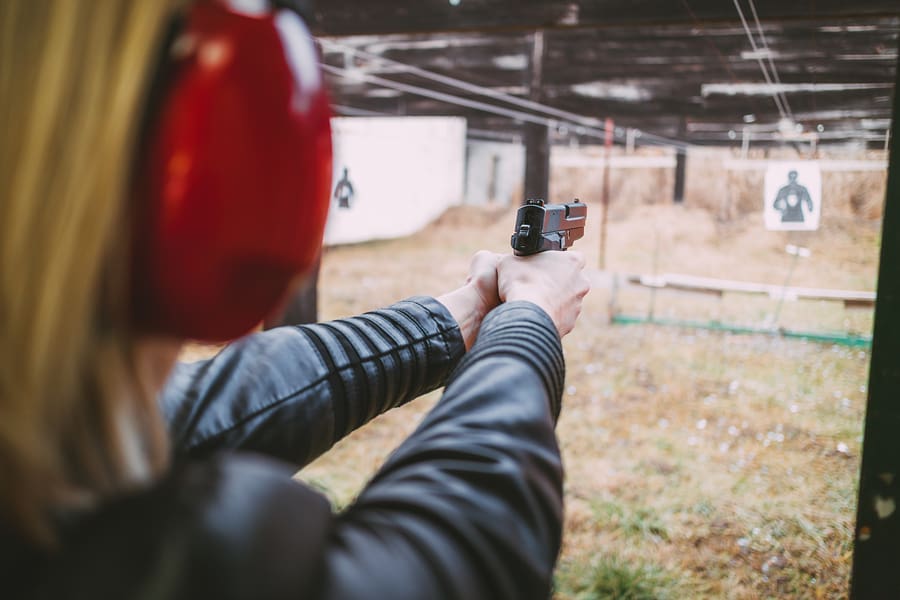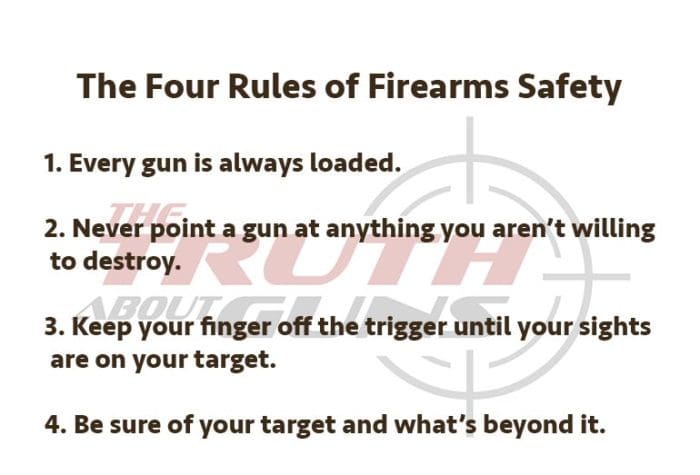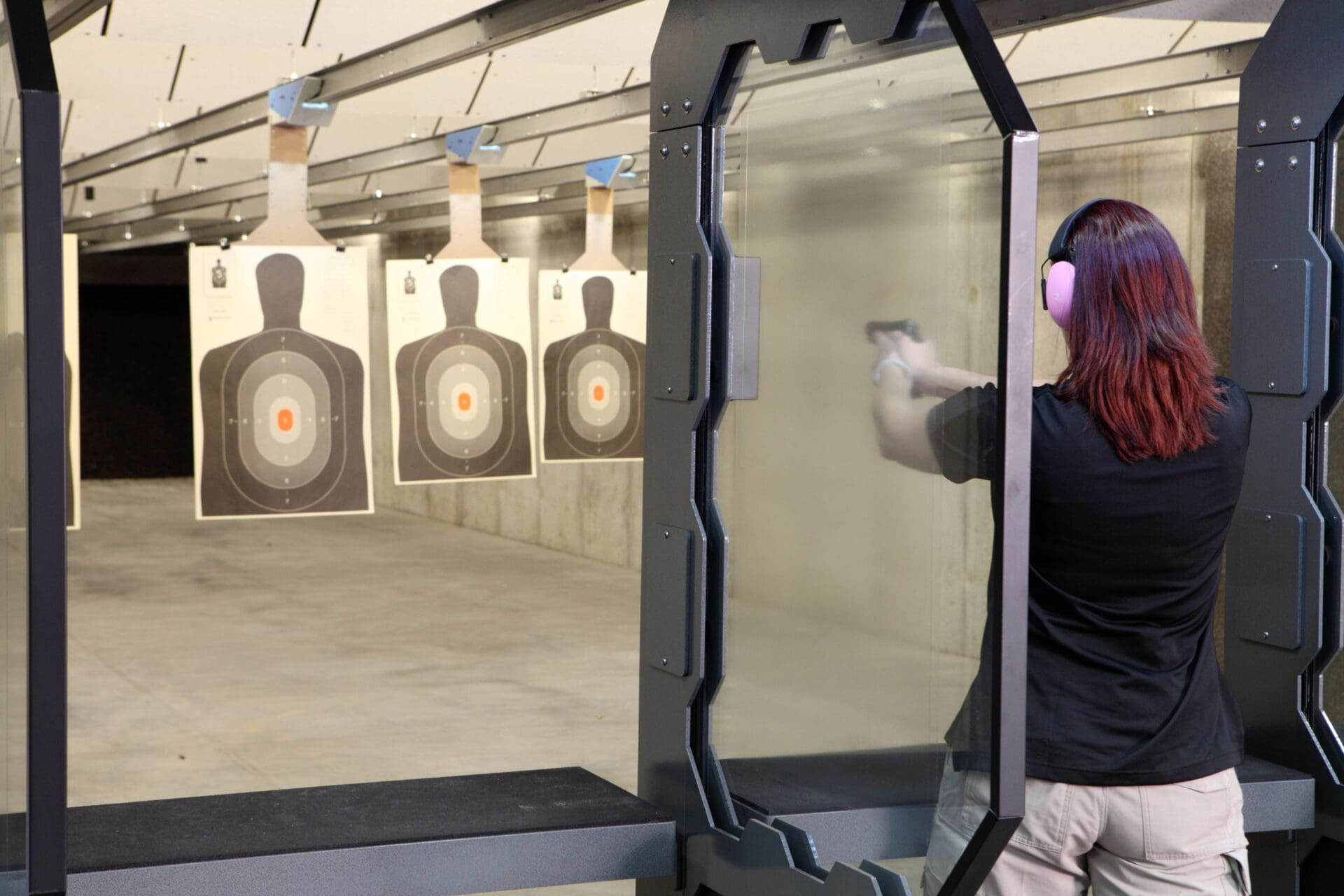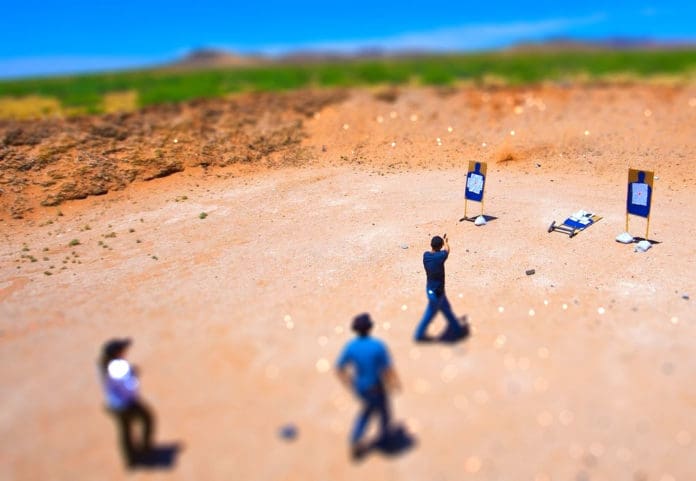During the past year, I’ve seen a lot of people argue over whether it’s a good idea to lend guns to others in an emergency (or any time, really). Neighbors who hadn’t bought a gun suddenly wanted one when they saw the pandemic, riots, and other societal events that frightened them.
Some of these people’s neighbors had even been antagonistic toward guns, but changed their minds fast. The result? Record sales last year, much of it comprised of millions of first-time buyers. With stocks running low and FFLs closed up for periods in some states, people were asking friends and family if they could borrow a gun.
Lending guns to people who are totally new to them is a generally bad idea. In some states, it’s illegal, so be sure to check your state laws to stay out of trouble. Even where it’s legal, though, lending them out to people with no experience can lead to some very bad outcomes.
Accidents are the big one, as someone with no familiarity with safety rules is a lot more likely to mishandle one. If they do end up needing to use the gun you lent them, it’s not a magic death ray. Chances are they won’t load it properly, disengage the safety, miss the target, and fail to consider what’s beyond their target. With no training, your friend, family member, or neighbor might be worse off.
Don’t Build A House On Sand
The other big problem is that they’re not invested in gun ownership if you lend one to them. You’re helping them build a house on sand. They didn’t have to lay down any cash, and when the bad times are over, they’ll give it back and go back to being neutral or anti-gun again.
When the anti-gun storms come, as they inevitably do, any appreciation they had for gun rights will be washed away.
On the other hand, if they spend their time and hard-earned money on a gun, getting trained, and learning basic safety lessons and respect for guns, they’ll be more committed to it. Their support willbe be built on rock, and they’ll be less likely to go back to being unprepared or even hostile to the right to keep and bear arms later. Having some basic knowledge about firearms and their responsible use will also inoculate them against the lies the civilian disarmament movement uses.
For that reason, you probably want to be a facilitator or advisor and not a lender when someone asks to borrow a gun in most situations. Point them in the right direction and start them down the right path to responsible, committed ownership.
Take them to the range and teach them the ropes. Help them figure out what gun best works for their situation and feels good in their hands. Mentor them and point them to resources and instructors that you’ve grown to trust so they’ll have a solid foundation that won’t wash away.
But…There’s Not Always Time
On the other hand, the ideal approach might not apply to all situations. You want people to build a solid foundation and work toward mastering firearms, but when really bad things happen, that might be a luxury you simply don’t have.
The official “safety first” instructor answer to this is that you should turn those people away unless they get trained, but we’re also humans and not everyone is going to do that. You want to help friends and relatives in need when and if you can.
That’s why there needs to be a Plan C that you can fall back on in these situations so you’re not faced with the choice of handing someone a gun that they probably shouldn’t have, or leaving them out in the cold altogether.
A third choice that’s better is to get them squared away on at least a basic level before you give them that kind of responsibility.
Some People Do This For A Living
I’ve been teaching classes for ten years and have had my share of students who showed up for a CCW class who didn’t really need one. I’ve even had firearms instructors in law enforcement and the military show up to help a spouse or adult child through the course, or just to get the permit themselves in states that don’t recognize their existing training.
Some of those students are hard to deal with because they are bored and think they already know it all. But others have brought things to the course that helped me become a better instructor.

One really cool experience with this was when I had a couple of special forces guys come to class. You’d think those guys would be super prideful and hard to deal with, but these guys were among the most easy going and humble people I’ve had on the range.
They were there to help their wives get permits and it wasn’t going well at first because nobody wants to listen to a spouse or partner in a teaching situation. It’s just a bad dynamic.
To get the spouses through the course without filing for divorce, we had to blend what I do as a civilian instructor and what they do in the military.
You can’t treat your spouse the same way you’d treat some poor victim of tyrants in a hell hole “developing country” who had better get things figured out fast or die. Plus, they were learning for personal defense, not guerrilla warfare. They’re just two totally different teaching styles. They were used to “Pineland rules” and the wives just weren’t having it.
During lunch, we figured this out, and by dinner the next day the ladies were almost outshooting their husbands and were damned professional in their gun handling. From this experience and lots more, I’ll share some tips you can use to get people up to speed in a hurry if you’re ever in a situation that requires it.
Focus On The Essentials
Before you can start building muscle, you’d better have a skeleton first. That’s how you have to treat rapid short-term training.
Focus on the first things someone must learn so that they can then slowly build some skill and confidence. You don’t have time to get anything perfect, so you need to spend the time you do have on the most important things.
This guide is built around handguns, but you can adapt it for long guns by changing the distances and stances as needed.
Activate The Brain (Chill Out)
Before you start, have everybody take a few deep breaths. If you’re trying to train and learn under stress, you’ll be less effective. If they’re religious, have them say a quick prayer (really). Getting doubt and adrenaline out of your system is the key at this point, or no one is going to learn anything.
It’s also good to take a break in the middle of your lesson and do this again if you see the newbie struggling. You have to keep their brain clear and activated through the process.
Safety Rules
First, get through the four safety rules. You should already have these or something similar memorized, so you’re ready to teach it on the spot anywhere.

Tell them to say the rules out loud and repeated them back to you a few times. Have them give you a quick explanation of each. Saying it out loud reinforces the and helps commit them to memory.
They’ll stumble through this for a few minutes, but they’ll begin to get it. That’s when they’re ready to start handling an unloaded gun. Every few minutes, though, do a pop quiz question on one aspect of the rules so it will soak into their long term memory.
The first thing you’ll want to teach them with an unloaded gun in hand is Position Sul or a similar side-and-down grip with a rifle. Before you start stringing me up, I know it’s not the best position tactically speaking, but it’s good for beginners to avoid shooting themselves and each other while walking around on the range or in the woods. That’s why it was invented. The gun is always pointed downward and not at the carrier’s feet.
Most importantly, Position Sul is easy to learn and hard to screw up. It’s not meant to be a ready position as much as a safety position. It’s almost like a virtual holster they can use to stay out of trouble while they’re learning safe handling, and it helps them get used to indexing.
Handling and Dry Fire
Next, teach them how to clear the gun. Show them how to look for daylight in the magazine well and check for a round in the chamber, all while not sweeping anyone.
Before anyone gets a live round, they need dryfire practice with a focus on sight alignment and trigger control. Have them pick something to aim at that’s in a safe direction (this is a good time to run them through the four rules again). It could be as simple as a piece of tape or Post-it Note on a wall.
Have them aim at their target and dry fire, slowly and in a controlled manner, then give them some feedback on things like their grip, stance, finger position, etc. Teach them to keep their sights still while squeezing the trigger.
At this point, you should have a student who has a basic idea of the basic safety rules and the fundamentals. Quiz them a couple more times to burn it in.
If you’re short on ammo and things are looking bleak, you might have to stop here. It’s not ideal, but neither is running out of ammo when you need it the most. Also, you might be in a situation where you aren’t somewhere that you can do live fire practice and have no choice.
The good news is that new shooters who have done a lot of dry fire practice tend to shoot really well the first few shots before things like recoil anticipation have a chance to develop, so you’ll still be light-years ahead of handing someone with zero training a loaded gun and hoping for the best.
Either way, keep quizzing them on the safety rules and have them dry fire every few hours to get more repetitions in.
Live Fire
If you have the option to continue on to live fire training, do so, but don’t use cans or bottles as targets if you can avoid that. Those kinds of target are “pass/fail” and don’t give any insight into what the student may be doing wrong when they miss. You need to get them shooting on paper to help them progress.
At this point, it’s really simple. Just be sure to start at five yards or less.
Shots that are high or low are typically caused by some form of recoil anticipation, and you may need to go back to dry fire or play “ball and dummy” to fix that. Shots that are off to the left or right are usually caused by trigger control issues. Make sure the trigger is half way between the tip of the shooter’s finger and the first joint. Make sure they’re squeezing straight back. You can always go back for more dry fire training to help them see what’s going wrong without the discomfort of firing a live round.

Once they’re getting consistent groups in the center at three to yards, move on to seven and then 10 yards for pistols, or longer ranges for rifles. Wash, rinse, repeat. At every break that isn’t happening to reduce stress, quiz your new shooter on those safety rules.
In my experience, you can get through all of this in two to four hours with a small group, and faster if it’s one-on-one. But if you’re going to be around the people in the following days, be sure to quiz them more and have them do more dry fire to burn it in.
Now It’s Your Turn
Memorize these key points and then read through the last section of the article again.
- Chill out
- Safety and Sul
- Dry Fire
- Live Fire
- Quiz early and quiz often
If you can memorize those, you’ll have an easier time remembering the things you’ll need to cover at each step. Over the next few days, quiz yourself on these so you’ll begin to burn it into your own long-term memory in case you ever need to get someone familiar with shooting basics in a hurry.
You won’t end up with perfect shooters at the end of this, but you’ll have people with you who probably aren’t going to shoot themselves or each other and will be able to hit a target. That’s a whole lot better than just giving people guns in an emergency.





I like it a lot. Dry fire is free and some lasers cost about the same as a box or two of ammo now. Good way to build up reps before hitting the live fire range.
Very similar to what I have done with people. I like starting them close; paper plate size target at three, then five, seven and ten. Restart them at three yards with a seven inch, then increase distance again, then the five inch target at three and increase distance. the same can be done with double and triple shots.
Most newer people are ok at three yards and the builds confidence as you increase distance. Pretty much anybody that can keep them on a paper plate size target can do a seven or five inch at three and it keeps them moving and getting better instead of getting frustrated by starting with smaller targets at longer distances.
I disagree with the entire premise. Learn to shoot dangerously, but accurately. If you’re mind is on safety, you’re probably gonna die.
Nothing worse than a buffoon with a gun. You can spot em’ at gun stores and gun shows because they are the ones showing you the rifling in the gun they are looking at from from 10 feet away.
To get going in the world of firearms it helps to be mechanically inclined, learn to do your own maintenance to the point you do not need advice from any azzhat on ar15.com who just cannot wait to say “GTG” without providing any viable remedy for minor problems such as a pivot pin that won’t fully seat, etc. Some of the ‘”advice” on that forum really makes you wonder and then there are some who really know what’s going on but most of the time they are busy with trigger time and building and not hanging around people who would rather just talk until it’s their bedtime.
Everybody starts somewhere but combine firearms with incompetence and you may not get a chance to start over.
One other thing you need for shooting is good eyesight. And with the new disgusting font on this forum you are cruising for glasses. To save my eyesight I sometimes use Word and copy and paste. Other times I use the new font and do not bother with editing, etc. Since the new font it appears there are less people posting. I hope they did not go blind.
…and whether it’s proper gun handling or just walking down the street, SAR owner DUHbbie W. Knows incompetence!
https://www.youtube.com/watch?v=P5iqYuFmzqg
So true, Ing, the little ‘smh’ troll is sad and little (and likely microscopic between his legs…)
*snicker* 😉
Here’s the fastest way to teach your wife: https://m.youtube.com/watch?v=uvXNiZOppRo
Works for Ethan Hunt aka Tom Cruise.
LIKED ARTICAL COVERED A LOT INFOR ,
I NEVER EVER LONE WEAPON OUT . ALSO MY WEAPON INSURANCE COVES ONLY ME AND MY WEAPON I HAVE .
THANKS
What, I can’t hear you!
I gave a small revolver to a neighbor, a dentist, who said he was being threatened. It saved his life and took the life of his aggressor. Best move I’ve ever made.
If you have waited until a SHTF situation to teach someone to shoot you’ve already lost. Start them young, train them right and teach them how to Kill it, Clean it, Eat it and if necessary hide the remains. Knowing how to shoot while important is secondary to mind set. Since hunting for food or self defense requires the act of shooting something besides a paper target or steel plate. The very act of Killing something goes against nearly every thought process instilled in the human psyche. Knowing how to shoot can take a person only so far. Be able to shoot requires the correct mindset. Without it failure is almost guaranteed. Keep Your Powder Dry.
Not necessarily. It could be an emergent need, and it’s wise to be prepared for such things.
It’s probably more wise to make like an ant and say “Piss off, grasshopper!”.
That’s why it pisses me off when the cops meatwagon hauls off the dead guy, all that wasted food.
A girl once asked me to show her how to load a revolver she had . I did. later that night she shot her cheating husband. So how much training does it really take.
Did the cops haul away your buffet that time too?
Yup, another plan shot to hell.
So… if I’m reading this right what you’re saying is that the appropriate course of action is to buy a ski mask and give them a first-hand taste of being the victim of an armed robbery, maybe rough ’em up a bit too, so that they’re invested in this?
Seems like once you’re far enough down the road to actually consider an in extremis circumstance like this… just letting Darwin work is a better plan.
Allow the robbery to occur naturally, off the robbers, loot both the victims and the perpetrators, two sets of idiots, one stone, all their stuff for you. And if a van marked “Mystery Machine” shows up with some hippies in it, well that’s just more fertilizer.
And, yes, for the smoothbrains: /s.
Let them be IN FRONT of you, wait till they go empty and get clear then you fire. Watch em like a hawk.
As per lending someone a firearm that will go beyond the lender’s control and presence, I’d be concerned for my own legal/financial liabilities in most states. Letting someone shoot one of my firearms at a range with we me standing in close proximity us one thing, actually letting that person leave with the firearm is another thing entirely and I wouldn’t even consider it except, perhaps, for one of my biological brothers.
As per “teaching” someone to shoot, or to demonstrate to another that which I, or you can already do, it’s a simple process. Our failing public education system has demonstrated very well over the past 25 years or so, however, that “teaching” often has little to do with actual “learning”, particularly when their is little respect for the teacher’s position from the student, or the system under which the instructor must work. That is almost entirely up to the attitude and mindset of the student.
Lol no.
What a stupid fucking article.
Chaz warlords writing this shit down…
I think a lot of gunm instructors throw a bunch of sht into it just soes the people paying them think there learning something. WTF is that SUL crap, my thumbs gotta be locked over my second digits first knuckle at a 62 degree angle perpendicular to my belt line vertical to the sunset cattywhompus of your left foot extended two inches from the off hand .
Comments are closed.